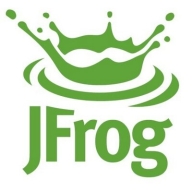

Amazon ECR and JFrog Container Registry compete in container management. Amazon ECR gains an upper hand for AWS users with its tight integration, while JFrog caters to broader artifact management needs.
Features: Amazon ECR integrates seamlessly with AWS, provides automated image vulnerability scanning, and offers robust security features. JFrog Container Registry supports comprehensive artifact management, integrates with various ecosystems, and allows multiple repositories, showcasing its versatility.
Room for Improvement: Amazon ECR could enhance support for broader ecosystems and offer more flexibility outside AWS. It might also improve image scanning efficiency. JFrog Container Registry could benefit from more cost-effective pricing models, streamlined interfaces, and reduced complexity in setup processes.
Ease of Deployment and Customer Service: Amazon ECR streamlines deployment for AWS users due to its integration with AWS services, offering strong support via AWS. JFrog provides flexible deployment options across on-premises and cloud, backed by responsive customer service, beneficial for diverse environments.
Pricing and ROI: Amazon ECR follows a pay-as-you-go pricing approach, offering cost efficiency for AWS-centric deployments. JFrog Container Registry may require a larger initial investment but delivers high returns in feature richness, supporting organizations managing numerous artifacts.
| Product | Market Share (%) |
|---|---|
| JFrog Container Registry | 30.1% |
| Amazon ECR | 18.3% |
| Other | 51.599999999999994% |


| Company Size | Count |
|---|---|
| Small Business | 11 |
| Midsize Enterprise | 4 |
| Large Enterprise | 7 |
Amazon Elastic Container Registry (ECR) is a fully-managed Docker container registry that makes it easy for developers to store, manage, and deploy Docker container images. Amazon ECR is integrated with Amazon Elastic Container Service (ECS), simplifying your development to production workflow.
The JFrog Container Registry is a repository manager, which supports Docker and Helm registries and Generic repositories, allowing you to build, deploy and manage your container images while providing powerful features with fine-grained permission control behind a sleek and easy-to-use UI.
We monitor all Container Registry reviews to prevent fraudulent reviews and keep review quality high. We do not post reviews by company employees or direct competitors. We validate each review for authenticity via cross-reference with LinkedIn, and personal follow-up with the reviewer when necessary.